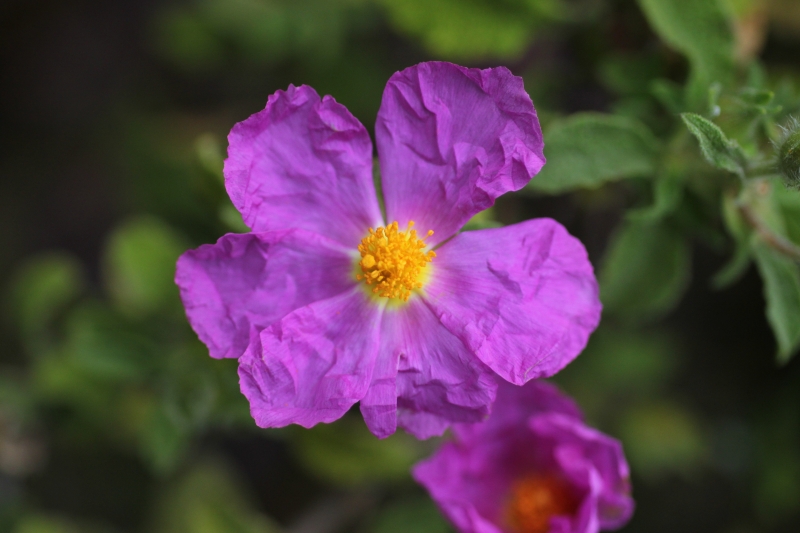Mediterranean flora

Best time to visit: March to October
The Mediterranean flora is unique and is characterised by a very high species diversity. There are five regions worldwide with a Mediterranean climate: California, Chile, South Africa Cape region, Mediterranean region and SW Australia. Due to large-scale agriculture, many of these areas are threatened in their plant diversity.
Around 700 Mediterranean species grow in the Mediterranean Garden, some of which are rare, such as the Sandarac (Tetraclinis articulata) or Cretan Zelkove (Zelkova albelicea). Some have a high profile, such as cistus (Cistus sp.), lavender (Lavandula angustifolium), thyme (Thymus sp.) or rosemary (Salvia rosmarinus). Especially at midday, they immerse us in a coud of essential oil scents.
The plants are adapted to the hot, dry summer season and have needle-like, leathery or hairy leaves to reduce evaporation. Some survive the summer as a geophyte in the ground, like saffron (Crocus sativus).

Maik Meissner (gardener):
"Working in the scents of lavender and rosemary is fun!"

Rayko Jonas (gardener):
"The most beautiful thing for me is the wonderful variety of shapes, colours and scents in the Mediterranean garden."
